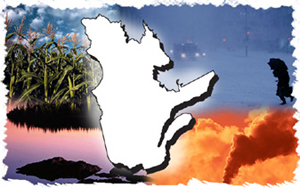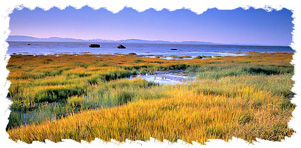
Natural Resources Canada > Earth Sciences Sector > Priorities > Climate Change Impacts and Adaptation > Teacher's Guide
Climate Change in Canada Regional Aspects of Climate Change - Quebec
If atmospheric carbon dioxide levels were to double, Quebec would experience average temperature increases of 1°C to 4°C in the south and 2°C to 6°C in the north by the end of this century. Precipitation would likely remain the same or decrease slightly in the south, while increasing 10% to 20% in the north.
Even over the past 100 years, Quebec has experienced significant climate changes. A slight decrease in average temperatures between 1940 and 1970 was followed by the 10 hottest years of the century in the 1980s.
Potential regional impacts
- Climate change may increase the number of severe summer storms that occur in the hotter, more humid climate. Events such as the 1996 Saguenay flood may become more frequent.
- As water levels fluctuate in the St. Lawrence River, opportunistic flora and fauna may disrupt sensitive ecosystems.
- More humid, moist weather conditions favour the proliferation of some bacteria and moulds, threatening public health.
- Under a warmer climate, certain species of trees and animals may extend their ranges farther north, competing with indigenous species.
- Since maple syrup production depends on spring cycles of freeze and thaw, the volume of production could change significantly.
- Permafrost is extremely sensitive to temperature change and its thawing could affect water drainage and road stability in the far north of the province.
Curriculum linkages
Secondary school Physical science course
Terminal objective 1.0: To describe the main characteristics of the Earth's atmosphere.
- To demonstrate through experiments
- the greenhouse effect
- the black body effect.
Terminal objective 1.2: To describe the various phase changes of water vapour.
- To identify the various environmental factors that make the evaporation of water possible.
- To establish the different between the various natural changes of water in the atmosphere.
Terminal objective 1.3: To explain the direct effect of the wind on air circulation and weather systems.
- To illustrate air movement due to local topography.
- To determine the direction and speed of the wind by observing certain elements in the environment.
| 

